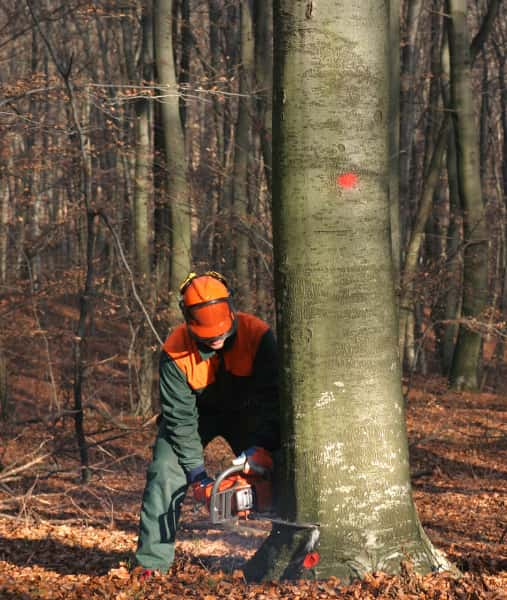Why Pruning Matters More in Windy Regions
Introduction
Wind is one of the most unpredictable and damaging natural forces that trees face, especially in exposed or semi-rural parts of the UK. While trees are remarkably resilient, unmanaged growth and structural weaknesses can lead to dangerous outcomes during high winds, including broken branches, uprooted trunks, or damage to surrounding property.
At Armour Tree Surgery Northampton, we work closely with homeowners, landowners, and property managers in Northampton, Northamptonshire to manage tree health and stability through expert pruning. In this article, we explain why pruning is particularly critical in windy regions and how it helps mitigate risk and preserve tree health.
The Impact of Wind on Tree Structure
Wind places dynamic stress on trees. The more surface area a tree presents—through leaves, branches, and crown density—the more resistance it meets during strong gusts. This can cause movement, flexing, and, in some cases, structural failure.
Common Wind-Related Issues
- Splitting of weak or co-dominant stems
- Snapping of overextended limbs
- Uprooting of shallow-rooted trees
- Branches colliding with each other or nearby structures
- Increased vulnerability in saturated ground conditions
Pruning plays a vital role in managing these risks by improving a tree’s structural integrity and reducing wind resistance.
How Pruning Enhances Wind Resistance
Strategic pruning reshapes the tree crown and removes weak or problematic growth, allowing wind to pass through more easily and reducing mechanical stress on the trunk and limbs.
Benefits of Professional Pruning
- Reduces wind sail by thinning the canopy
- Removes deadwood that’s prone to breakage
- Shortens overextended limbs to prevent snapping
- Encourages strong branch attachments through formative pruning
- Balances the crown to distribute wind loads evenly
At Armour Tree Surgery Northampton, we apply targeted pruning methods tailored to local conditions and tree species found in Northamptonshire’s varied landscapes.
Trees Most at Risk in Windy Areas
Not all trees respond to wind in the same way. Some species are more prone to windthrow or branch failure due to their growth habits or wood density. It’s important to understand which trees in your garden or property need more frequent attention.
High-Risk Examples
- Fast-growing softwoods like poplar and willow
- Shallow-rooted species such as silver birch
- Trees with dense, unbalanced canopies like sycamore
- Trees growing in poorly drained or compacted soil
- Mature specimens showing signs of decay or poor pruning history
Our team in Northampton provides risk assessments to help property owners identify which trees would benefit most from pruning in windy regions.
Timing and Frequency of Pruning
While it’s essential to prune trees proactively in windy regions, timing is equally important to avoid stressing the tree unnecessarily or encouraging weak regrowth.
Best Practices for Timing
- Late winter or early spring: Ideal for most deciduous trees before new growth starts
- Mid to late summer: Suitable for managing minor reductions and deadwood removal
- After storm damage: Prompt response can prevent further harm and disease entry
- Every 2–5 years: Depends on species, location, and previous pruning history
Armour Tree Surgery Northampton offers regular maintenance plans in Northamptonshire, ensuring trees are inspected and pruned at the right intervals.
Pruning vs. Tree Removal in Windy Areas
In some cases, pruning alone may not be sufficient. Trees that have suffered extensive damage or are structurally unsound may need to be removed altogether to protect people and property.
When Removal Is the Safer Option
- Significant internal decay or hollowing
- Leaning dangerously towards buildings or public access
- Repeated branch failures despite pruning
- Evidence of root plate instability or fungal infections
Our qualified arborists in Northampton assess each tree individually and provide honest, expert recommendations based on safety and long-term viability.
Conclusion
In windy regions like parts of Northamptonshire, proactive pruning is not just good tree care—it’s essential for safety and structural resilience. By reducing wind load, improving tree form, and removing potential hazards, regular pruning ensures your trees remain both beautiful and secure throughout the year.
If you’re concerned about the condition of your trees in Northampton or want to schedule an expert inspection, contact Armour Tree Surgery Northampton. Our experienced team is here to help you protect your property, maintain healthy trees, and manage wind-related risks with confidence.
Call us on: 01604 279 096
Click here to find out more about Armour Tree Surgery Northampton
Click here to complete our contact form and see how we can help with your tree needs.

